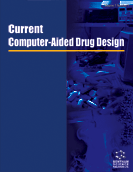Abstract
The identification of new lead structures is a pivotal task in early drug discovery. Molecular de novo design of ligand structures has been successfully applied in various drug discovery projects. Still, the question of the scaffold hopping potential of drug design by adaptive evolutionary optimization has been left unanswered. It was unclear whether de novo design is actually able to leap away from given chemotypes (“activity islands”), allowing for rescaffolding of compounds. We have addressed these questions by scrutinizing different scoring functions of our de novo design software Flux for their ability to enable scaffold-hops for various target classes. We evaluated both the potential bioactivity and the scaffold diversity of de novo generated structures. For several target classes, known lead structures were reconstructed by the de novo algorithm (“lead-hopping”). We demonstrate that for one or multiple templates of a given chemotype, other chemotypes are reached during de novo compound generation, thus indicating successful scaffold-hops.
Keywords: Drug discovery, de novo design, machine learning, scaffold-hopping, similarity, building block
Combinatorial Chemistry & High Throughput Screening
Title: Scaffold-Hopping Potential of Fragment-Based De Novo Design: The Chances and Limits of Variation
Volume: 12 Issue: 4
Author(s): Bjoern A. Krueger, Axel Dietrich, Karl-Heinz Baringhaus and Gisbert Schneider
Affiliation:
Keywords: Drug discovery, de novo design, machine learning, scaffold-hopping, similarity, building block
Abstract: The identification of new lead structures is a pivotal task in early drug discovery. Molecular de novo design of ligand structures has been successfully applied in various drug discovery projects. Still, the question of the scaffold hopping potential of drug design by adaptive evolutionary optimization has been left unanswered. It was unclear whether de novo design is actually able to leap away from given chemotypes (“activity islands”), allowing for rescaffolding of compounds. We have addressed these questions by scrutinizing different scoring functions of our de novo design software Flux for their ability to enable scaffold-hops for various target classes. We evaluated both the potential bioactivity and the scaffold diversity of de novo generated structures. For several target classes, known lead structures were reconstructed by the de novo algorithm (“lead-hopping”). We demonstrate that for one or multiple templates of a given chemotype, other chemotypes are reached during de novo compound generation, thus indicating successful scaffold-hops.
Export Options
About this article
Cite this article as:
Krueger A. Bjoern, Dietrich Axel, Baringhaus Karl-Heinz and Schneider Gisbert, Scaffold-Hopping Potential of Fragment-Based De Novo Design: The Chances and Limits of Variation, Combinatorial Chemistry & High Throughput Screening 2009; 12 (4) . https://dx.doi.org/10.2174/138620709788167971
| DOI https://dx.doi.org/10.2174/138620709788167971 |
Print ISSN 1386-2073 |
| Publisher Name Bentham Science Publisher |
Online ISSN 1875-5402 |
 14
14
- Author Guidelines
- Bentham Author Support Services (BASS)
- Graphical Abstracts
- Fabricating and Stating False Information
- Research Misconduct
- Post Publication Discussions and Corrections
- Publishing Ethics and Rectitude
- Increase Visibility of Your Article
- Archiving Policies
- Peer Review Workflow
- Order Your Article Before Print
- Promote Your Article
- Manuscript Transfer Facility
- Editorial Policies
- Allegations from Whistleblowers


























